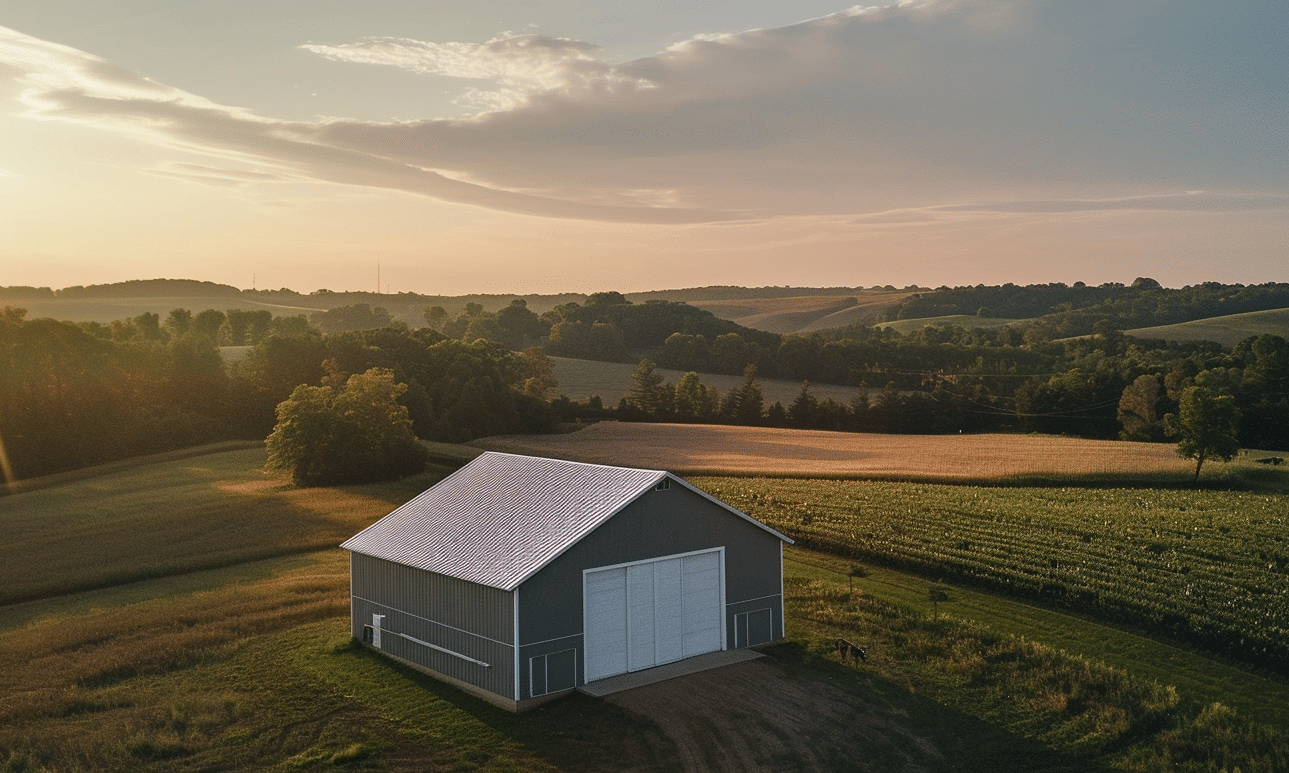When embarking on any construction project, one of the fundamental decisions you’ll face is choosing between pole barn construction and traditional construction methods. But what’s the real difference between these two methods, and how do you discern which is best for your project? Let’s explore the pros and cons to help guide your decision-making process.
The Origins of Pole Barns and Traditional Construction
Understanding Pole Barns
Initially popularized in the agricultural sector, pole barns have grown exponentially due to their versatile and cost-effective nature. With roots dating back to the early 20th century, pole barn construction involves embedding large poles or posts into the ground, which serve as the primary support for the structure. Lacking a traditional foundation, these constructions typically boast a quicker build time and lower construction costs.
A Look at Traditional Construction Methods
Traditional construction, on the other hand, is a tried-and-true method involving materials like wood, brick, or concrete. This approach demands a solid foundation, often yielding a more durable and permanent structure. Rich in history, traditional construction is known for its ability to offer customizable and aesthetically pleasing designs. But let’s be honest, can we really overlook the time and investment such methods often require?
Comparing Durability and Versatility
Pole Barn Construction: A Robust Option?
When it comes to durability, pole barns have shown significant improvements over the years. Today, these structures can withstand severe weather conditions due to their engineered truss systems and metal cladding. Additionally, with innovations in design and materials, pole barn construction is quite versatile, accommodating residential, commercial, and agricultural applications.
Traditional Construction: The Legacy of Longevity
Traditional building methods remain at the forefront when it comes to longevity and structural integrity. The solid foundations and materials offer resistance to wear-and-tear over decades. This method is ideal for projects that demand lasting structures, such as family homes or landmark buildings—where sentimental or functional value is high.

Exploring Costs and Construction Time
Budgeting for a Pole Barn
One of the most enticing benefits of pole barns is the cost—a factor that often leads to their selection. But why are they cheaper? Mainly because they require less extensive site preparation and less material overall. Moreover, the speed at which they can be constructed can significantly reduce costs associated with labor and on-site equipment.
Traditional Construction Budgets: A Deeper Dive
Although traditional methods can be more expensive, they offer unrivaled customization. Curved surfaces, ornate facades, and intricate designs are only achievable through traditional techniques. However, these aesthetics come with longer build times and higher costs due to the foundations and intricate work involved.
Assessing Energy Efficiency and Modern Needs
Pole Barns and Energy Efficiency
Modern pole barns can be insulated to improve energy efficiency significantly. While they may not inherently offer the same level of natural insulation as concrete or brick, advances in materials have made them far more sustainable than they once were. Think of them as a blank canvas that can be expanded upon.
The Traditional Take on Energy Needs
Traditional buildings naturally offer better insulation from extreme temperatures due to the density of materials used in their construction. Their design can easily integrate passive heating and cooling systems, aligning well with modern needs for energy efficiency.
Deciding Between Pole Barns and Traditional Construction
In conclusion, the decision between pole barn vs. traditional construction is as much about personal preference as it is about practicality. For those prioritizing budget and speed, pole barns offer an attractive solution. However, if customization, durability, and long-term value are at the forefront, traditional construction methods may be the preferable path. For those seeking further insight, your building needs in Ontario.
Is it worth investing in the longevity of traditional buildings, or does the versatility of pole barns capture your imagination and align with your project’s goals? Your answer will be the compass guiding your construction journey.
For more insight on Pole Barns vs. Steel Buildings and to explore the variety of construction solutions available, consider visiting Your Building Team, where construction dreams come to life.










